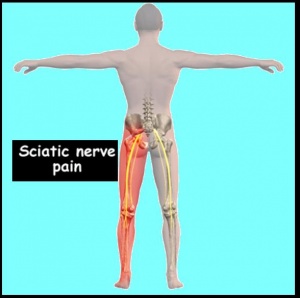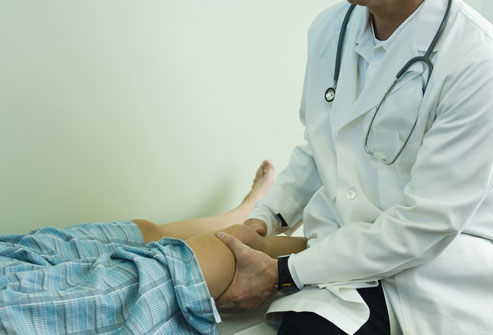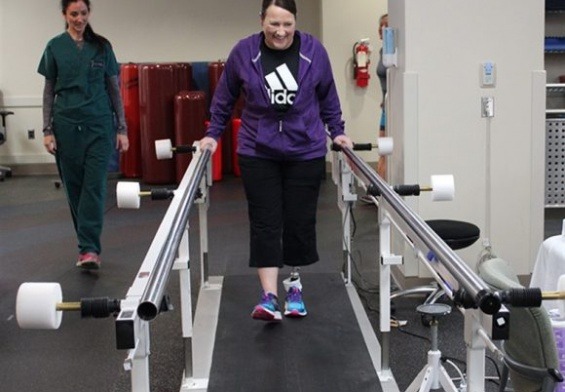An estimated 80% of the population experiences back pain– especially lower back pain– at one point or another in their lifetime. While still prevalent, leg pain can stem from back pain, but it occurs less frequently. Leg pain tends to be both bothersome and debilitating, potentially limiting an individual’s daily activities. Patients consulting a spinal care look to a doctor to administer treatment for quick pain relief; more importantly, patients want doctors to provide answers to the cause of their discomfort. But in the end, patients fail to understand that the answer may not be as clear-cut as they believe.
In reality, a wide spectrum of spinal conditions can lead to instances of both back and leg pain.
For example, Peripheral Artery Disease (PAD) can trigger leg pain, coupled with back pain. PAD refers to the buildup of plaque along artery walls and the subsequent blocking of blood vessels in the legs. This, in turn, restricts the amount of oxygen nourishing the leg muscles and causes discomfort in patients’ legs and back. But combined leg and back pain can also be a harbinger of a life-threatening condition called Deep Vein Thrombosis. This serious condition refers to the formation of blood clots in the deep veins in the body. If the clot breaks free, it can be dangerous and clog a smaller vessel, thereby culminating into a stroke.
What is Sciatica?

While spine specialists may have difficulty pinpointing the cause of back and leg pain, Sciatica tends to be the culprit in most cases. Sciatica is a general term for spinal compression of the sciatic nerve or any of its components. Contrary to popular belief, Sciatica is actually a set of symptoms rather than an actual condition. Common Sciatica symptoms include pain originating in the lower back, and radiating down into the leg. Sciatica usually affects only one side of the body, but it can disturb both sides. In some more extreme cases, Sciatica can result in loss of mobility.
But how exactly does Sciatica cause immense pain in multiple areas of the human body? The sciatic nerve is the largest nerve in the body, running from the base of the spinal column down through both legs. The sciatic nerve also controls the muscles in the back of the knee and lower legs, providing sensation to the back of the thigh, part of the lower leg, and the sole of the foot. If a spinal condition in the lower back impinges on any of the nerve roots mentioned, the symptoms can appear in any part of the body that the sciatic nerve controls. Thus, patients often report leg pain from Sciatica because a compressed nerve in the lower back can cause pain through the legs, feet and sometimes the toes.
What Causes Sciatica?
Sciatica is not a condition itself, but a myriad of symptoms from other spinal conditions such as lumbar disc degeneration, lumbar spinal stenosis, and a herniated disc. In young adults, a lumbar herniated disc is the most common cause of Sciatica. Despite what many patients mistakenly believe, doctors have yet to find a correlation between genetics resulting in Sciatica. These symptoms develop from normal aging process changes to the spinal column, thereby resulting in disc protrusion, herniations, and other spinal problems associated with degenerative disc disease. Sciatica can be the outcome of an injury, prolonged external pressure on the nerve such as from a tumor or abscess, and even medical conditions that affect the entire body such as diabetes mellitus. Excruciating pain in the legs, severe cramping, muscle weakness, tingling sensation, and numbness tend to be the hallmark symptoms of Sciatica. Since Sciatica refers to a set of symptoms, spine experts often perform an in-depth evaluation to pinpoint the exact origin of a patient’s discomfort before determining the best treatment option.
How To Treat Sciatica?
Breakthroughs in medicine allow spine experts to effectively treat Sciatica without surgery by performing minimally invasive procedures to alleviate conditions before leading to Sciatica. Today, spine doctors deploy non-invasive treatment methods such as physical therapy, rest and strengthening exercises, medication, and epidural injections. When these therapy modules prove unsuccessful or when patients lose significant bodily function, surgery may be the only remaining option to yield excellent pain relief. But identifying the appropriate surgical procedure depends on the condition causing Sciatica. For example, microdiscectomy may be useful for a herniated disc whereas lumbar laminectomy can treat spinal stenosis.
Recovery From Leg and Back Pain
These symptoms may be a sign of a more serious, underlying spinal condition. Thus, spine specialists highly advise patients to seek medical care from the moment they begin exhibiting signs of Sciatica. Failing to address certain symptoms of discomfort in the legs and back may result in irreversible damage. Even worse, surgery may be the only option after prolonging a consultation with a trusted spine surgeon. Don’t suffer in silence; contact a spine specialist in the nearby area today.




